- Author: Kathy Keatley Garvey
If you plant it, they will come.
Western tiger swallowtails (Papilio rutulus) can't get enough of our butterfly bush. For the first time ever, we saw two of them and managed to get both in the same image. Courtship? Curiosity? Chance encounter?
Whatever it was, they came together, touched and flew away.
Butterfly expert Art Shapiro, distinguished professor of evolution and ecology at the University of California, Davis, says that "the Western tiger swallowtail is basically a species of riparian forest, where it glides majestically back and forth along the watercourse. It has expanded into older urban neighborhoods where several of its host genera are grown as shade trees, and behaves as if the street were a watercourse. In the high country and on the Sierran east slope its usual host is Aspen.
"One brood (June-July) at higher elevations; one and a partial second at Washington; 2-3 at lower elevations with a long flight season (late February or March-September or October). An avid puddler. Visits Yerba Santa, California Buckeye, Milkweed, Dogbane, Lilies, Coyotemint, etc., etc. and in gardens frequent at Lilac and Buddleia. Spring individuals are smaller and usually paler than summer. Low-elevation hosts include Sycamore (Platanus), Ash (Fraxinus), Cherry and other stone fruits (Prunus), Willow (Salix), Privet (Ligustrum), Lilac (Syringa) and (in Sacramento County) Sweet Gum (Liquidambar)."
Nevertheless, "the tiger" is common in Western America and its bright yellow and black markings with its blue and orange spots on its tail is a sight we never tire of--even when parts of the swallowtail are missing. Predators, such as birds, praying mantids and spiders, try to grab it.
They may have a "tiger" by the tail, but that doesn't mean they can hold on.




- Author: Kathy Keatley Garvey
It's sort of like "The Beauty and the Beast."
Or "The Pollinator and the Pest."
A gorgeous Western Tiger swallowtail (Papilio rutulus), seeking nectar from a butterfly bush, touched down and began to feed.
It didn't take long for the butterfly to spot a stink bug crawling on top of the blossom. This blossom's not big enough for both of us.
The shield-shaped bug quickly scrambled out of its way.
Score:
Butterfly: 1
Stink Bug: 0
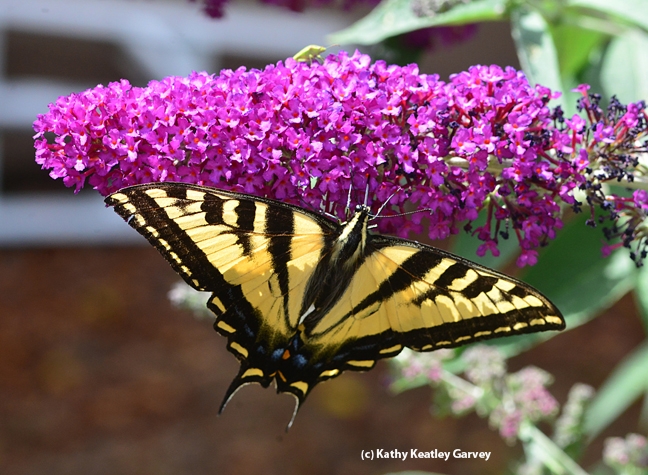

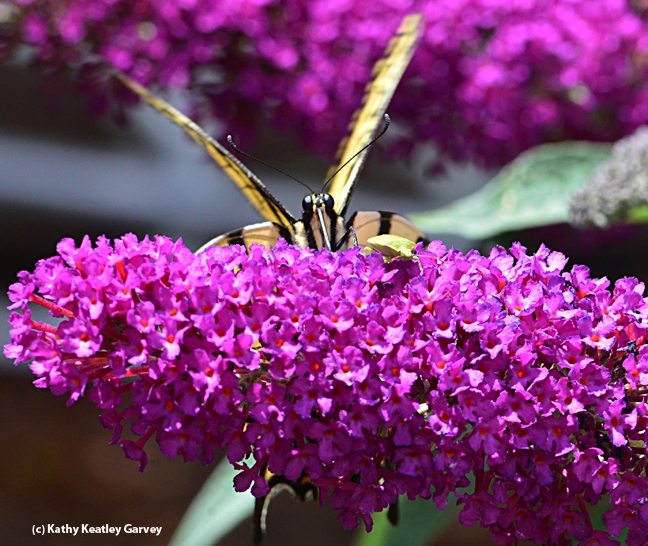
- Author: Kathy Keatley Garvey
Down on the farm...the Loma Vista Farm....
When the Loma Vista Farm--part of the Vallejo City Unified School District--recently hosted its annual Spring Festival, scores of folks came to see the animals, buy a plant or two, and participate in the many activities.
But if you looked closely, you could see that the farm, located at 150 Rainier,Vallejo, is also a pollinator habitat and home to many insects.
Lady beetles, aka lady bugs, munched on aphids in the garden (the garden feeds Vallejo school children as well). Those pesky spotted cucumber beetles also showed up. We spotted a beneficial insect (lady beetle) and a pest (spotted cucumber beetle) sharing a leaf.
A Western tiger swallowtail fluttered down to the aptly named butterfly bush for a sip of nectar. The caterpillar of an anise swallowtail dined on the leaves of its host plant, anise, also called fennel. (It smells like licorice to us!)
All the while, a colony of yellow-faced bumble bees, Bombus vosnesenskii, went about their bees-ness, entering and exiting a hole in the ground in a pattern that would alarm human air controllers. They zigged, zagged and then bumbled through with huge pollen loads, sometimes nearly colliding.
The Loma Vista Farm is also the habitat of "Farm Keeper" Rita LeRoy, who has worked for the Vallejo school district for 25 years. She teaches students about nature and nutrition through hands-on farm lessons involving cooking, gardening, insect appreciation, and animal care. She is an avid entomological enthusiast, an insect photographer, and a member of the Pollinator Posse.
Founded in 1974, the Loma Vista Farm is described on its website as a 5-acre outdoor classroom that provides hands-on educational activities involving plants and animals for children of all ages and abilities. "We seek to increase students' knowledge of nature and nutrition while enhancing academic learning, ecoliteracy, and psychosocial development."
The farm offers field trips, after-school opportunities through 4-H, community service and volunteer opportunities, garden-based workshops for adults, and job training for college students, developmentally disabled young adults, and disadvantaged youth.
It's open to the public Monday through Friday from 9 a.m. to 2:30 p.m. during the school year.
It's open to insects year around!
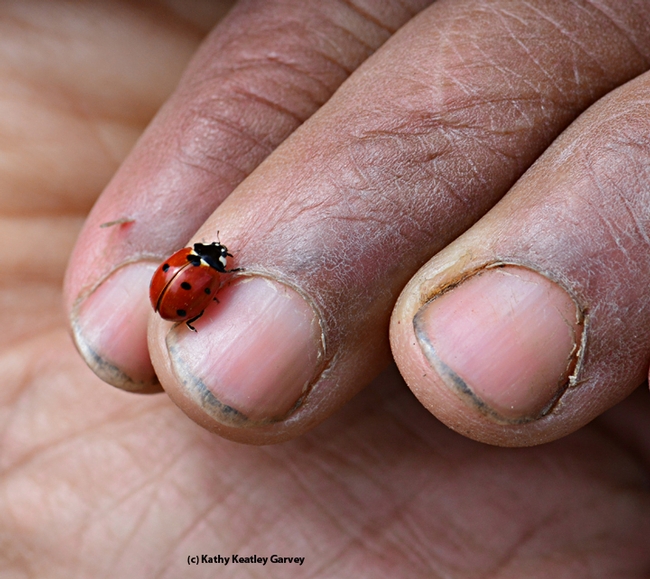
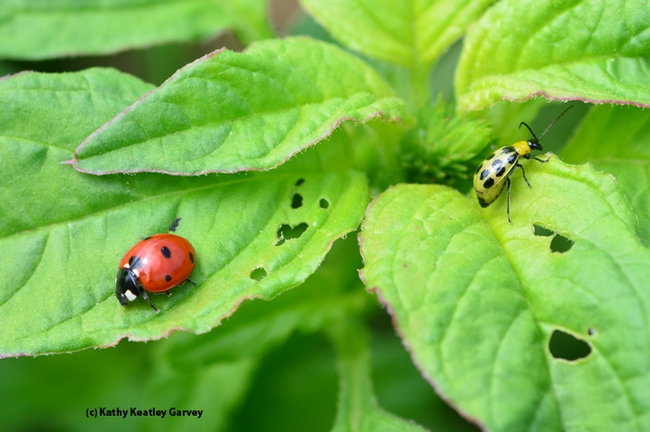

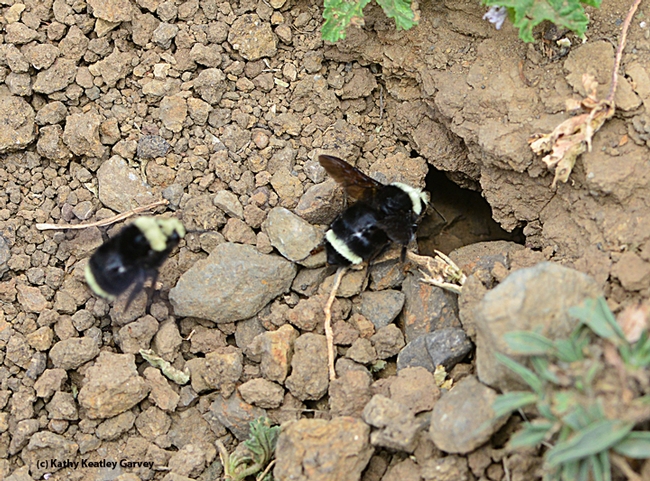

- Author: Kathy Keatley Garvey
She's a butterfly magnet.
When Oakland parks supervisor Tora Rocha, known as "The Monarch Queen" and "The Butterfly Whisperer," (she rears monarchs and encourages everyone to do so), visited the Häagen-Dazs Honey Bee Haven at the University of California, Davis, on Thursday, butterflies seemed to float in from everywhere!
The Western Tiger Swallowtail, Painted Lady, Gulf Fritillary and even the Cabbage White fluttered around her head.
But that Western Tiger Swallowtail...that newly emerged Western Tiger Swallowtail...
Aglow in yellow and fringed with black, it headed over to the Verbena to sip some flight fuel: sweet nectar. A brisk wind threatened to dislodge its hold but it refused to budge from its buffet.
The Häagen-Dazs Honey Bee Haven is the UC Davis Department of Entomology and Nematology's half-acre bee friendly garden on Bee Biology Road. Planted in the fall of 2009, it is located next to the Harry H. Laidlaw Jr. Honey Bee Research Facility, west of the central campus. (See history of the bee garden.)
And on Saturday, May 2 there will be a fifth anniversary celebration from 10 a.m. to 2 p.m. You're invited! (Yes, it's free and open to the public.) You'll see bee observation hives and beekeeping demonstrations. You'll learn what to plant for bees. Bee scientists will show you how to observe and identify bees, and show you native bee condos, also called "bee hotels" or "bee houses."
Besides the honey bees, bumble bees, sweat bees, carpenter bees and other pollinators, there's a good chance you'll see such butterflies as the Western Tiger Swallowtail (Papilio rutulus) sailing over the state-of-the-art fence that Eagle Scout Derek Tully and his assistants crafted.

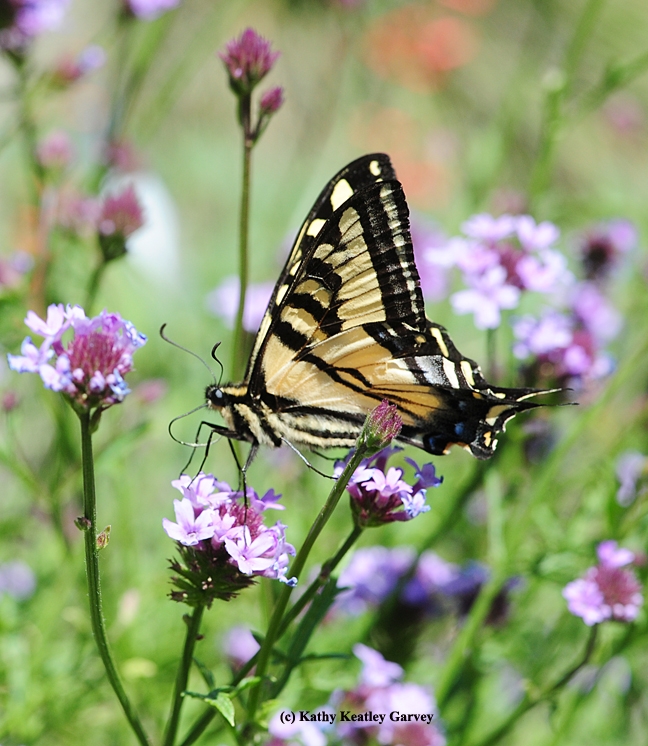
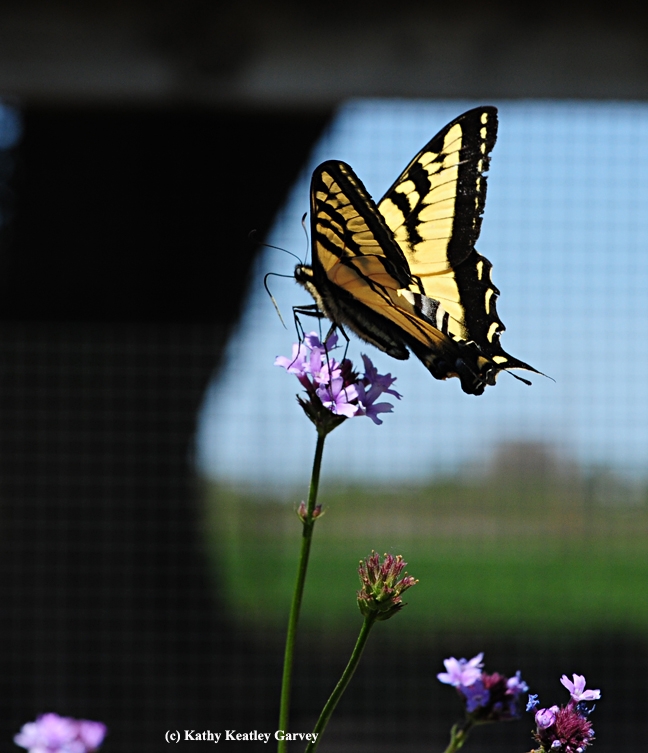
- Author: Kathy Keatley Garvey
Two's company. Three's a crowd?
Not necessarily.
Sometimes we wish it were half a dozen.
Last July we were admiring two newly emerged Gulf Fritillary butterflies on Mexican sunflowers (Tithonia) when a Western Tiger Swallowtail fluttered down, seemingly out of nowhere, to occupy the same sunflower as one Gulf Frit.
The Gulf Fritillary (Agraulis vanillae) and the Western Tiger Swallowtail (Papilio rutulus) eyed each other for a few seconds. Then in the way of the West ("This town isn't big enough for the both of us") the tiger spread its wings and took off.




